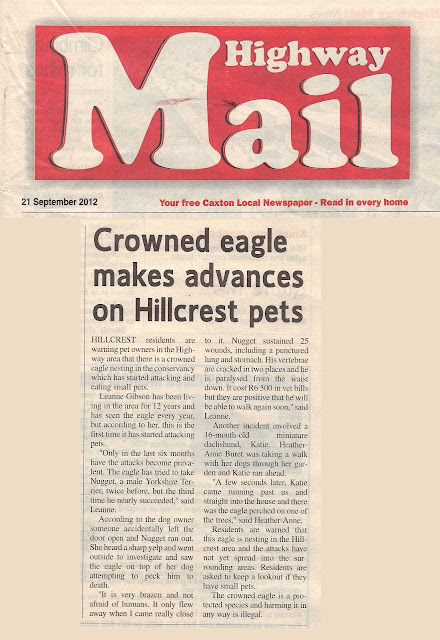- biodiversity threats: semi-feral cats and monkeys can become superabundant with the help of supplementary food and absence of natural predators. Their impact on birds and nesting success may be high.
- nuisance animals: racoons spread garbage while it waits for collection on the kerb
- disease risks: stray dogs and urban foxes are a potential source and vector of rabies
- health and safety: coyotes and eagles can threaten the safety of household pets - cats and small dogs that their owners have a emotional attachment to.
This last point is the topic of the day. Below is some information regarding a particular eagle that I have been following. It was infact the very first eagle captured and ringed for this project. The community is becoming polarized, some wanting to give the eagle full protection and let it live and disperse naturally, others (most of those impacted by attacks on pets) want it gone immediately.
Footnote: since sending this response I have had three different responses that the juvenile eagle was indeed offered food (viennas even- full of nitrates and additives). Those particular tenants have since moved on - and in their wake have left a legacy of a 'problem eagle'.




No comments:
Post a Comment